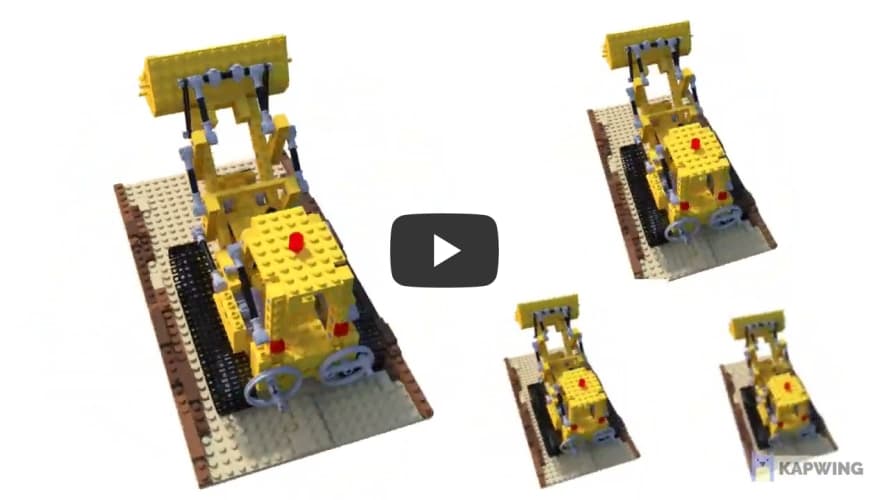Awesome
mipnerf_pl
Unofficial pytorch-lightning implement of Mip-NeRF, Here are some results generated by this repository (pre-trained models are provided below):
<table class="tg"> <thead> <tr> <th class="tg-0lax"></th> <th class="tg-baqh" colspan="12">Multi Scale Train And Multi Scale Test</th> <th class="tg-0lax" colspan="2">Single Scale</th> </tr> </thead> <tbody> <tr> <td class="tg-0pky"></td> <td class="tg-c3ow" colspan="6"><span style="font-weight:400;font-style:normal">PNSR</span></td> <td class="tg-c3ow" colspan="6"><span style="font-weight:400;font-style:normal">SSIM</span></td> <td class="tg-0lax">PSNR</td> <td class="tg-0lax">SSIM</td> </tr> <tr> <td class="tg-0pky"></td> <td class="tg-c3ow">Full Res</td> <td class="tg-c3ow">1/2 Res</td> <td class="tg-c3ow">1/4 Res</td> <td class="tg-c3ow">1/8 Res</td> <td class="tg-c3ow">Aveage <br>(PyTorch)</td> <td class="tg-c3ow">Aveage <br>(Jax)</td> <td class="tg-0pky">Full Res</td> <td class="tg-0pky"><span style="font-weight:400;font-style:normal">1/2 Res</span></td> <td class="tg-0pky"><span style="font-weight:400;font-style:normal">1/4 Res</span></td> <td class="tg-0pky"><span style="font-weight:400;font-style:normal">1/8 Res</span></td> <td class="tg-c3ow"><span style="font-weight:400;font-style:normal">Average</span><br><span style="font-weight:400;font-style:normal">(PyTorch)</span></td> <td class="tg-c3ow"><span style="font-weight:400;font-style:normal">Average</span><br><span style="font-weight:400;font-style:normal">(Jax)</span></td> <td class="tg-baqh" colspan="2">Full Res</td> </tr> <tr> <td class="tg-0pky">lego</td> <td class="tg-c3ow"><span style="font-weight:400;font-style:normal">34.412</span></td> <td class="tg-c3ow"><span style="font-weight:400;font-style:normal">35.640</span></td> <td class="tg-c3ow"><span style="font-weight:400;font-style:normal">36.074</span></td> <td class="tg-c3ow"><span style="font-weight:400;font-style:normal">35.482</span></td> <td class="tg-c3ow"><span style="font-weight:400;font-style:normal">35.402</span></td> <td class="tg-c3ow"><span style="font-weight:bold">35.736</span></td> <td class="tg-c3ow"><span style="font-weight:400;font-style:normal">0.9719</span></td> <td class="tg-c3ow"><span style="font-weight:400;font-style:normal">0.9843</span></td> <td class="tg-c3ow"><span style="font-weight:400;font-style:normal">0.9897</span></td> <td class="tg-c3ow"><span style="font-weight:400;font-style:normal">0.9912</span></td> <td class="tg-c3ow"><span style="font-weight:bold">0.9843</span></td> <td class="tg-c3ow"><span style="font-weight:bold">0.9843</span></td> <td class="tg-0lax">35.198</td> <td class="tg-0lax"><span style="font-weight:400;font-style:normal">0.985</span></td> </tr> </tbody> </table> <img src="media/image_comp.png" width="600"/>The top image of each column is groundtruth and the bottom image is Mip-NeRF render in different resolutions.
The above results are trained on the lego dataset with 300k steps for single-scale and multi-scale datasets respectively, and the pre-trained model can be found here.
Feel free to contribute more datasets.
Installation
We recommend using Anaconda to set up the environment. Run the following commands:
# Clone the repo
git clone https://github.com/hjxwhy/mipnerf_pl.git; cd mipnerf_pl
# Create a conda environment
conda create --name mipnerf python=3.9.12; conda activate mipnerf
# Prepare pip
conda install pip; pip install --upgrade pip
# Install PyTorch
pip3 install torch torchvision --extra-index-url https://download.pytorch.org/whl/cu113
# Install requirements
pip install -r requirements.txt
Dataset
Download the datasets from the NeRF official Google Drive and unzip nerf_synthetic.zip. You can generate the multi-scale dataset used in the paper with the following command:
# Generate all scenes
python datasets/convert_blender_data.py --blender_dir UZIP_DATA_DIR --out_dir OUT_DATA_DIR
# If you only want to generate a scene, you can:
python datasets/convert_blender_data.py --blender_dir UZIP_DATA_DIR --out_dir OUT_DATA_DIR --object_name lego
Running
Train
To train a single-scale lego Mip-NeRF:
# You can specify the GPU numbers and batch size at the end of command,
# such as num_gpus 2 train.batch_size 4096 val.batch_size 8192 and so on.
# More parameters can be found in the configs/lego.yaml file.
python train.py --out_dir OUT_DIR --data_path UZIP_DATA_DIR --dataset_name blender exp_name EXP_NAME
To train a multi-scale lego Mip-NeRF:
python train.py --out_dir OUT_DIR --data_path OUT_DATA_DIR --dataset_name multi_blender exp_name EXP_NAME
Evaluation
You can evaluate both single-scale and multi-scale models under the eval.sh guidance, changing all directories to your directory. Alternatively, you can use the following command for evaluation.
# eval single scale model
python eval.py --ckpt CKPT_PATH --out_dir OUT_DIR --scale 1 --save_image
# eval multi scale model
python eval.py --ckpt CKPT_PATH --out_dir OUT_DIR --scale 4 --save_image
# summarize the result again if you have saved the pnsr.txt and ssim.txt
python eval.py --ckpt CKPT_PATH --out_dir OUT_DIR --scale 4 --summa_only
Render Spheric Path Video
It also provide a script for rendering spheric path video
# Render spheric video
python render_video.py --ckpt CKPT_PATH --out_dir OUT_DIR --scale 4
# generate video if you already have images
python render_video.py --gen_video_only --render_images_dir IMG_DIR_RENDER
Visualize All Poses
The script modified from nerfplusplus supports visualize all poses which have been reorganized to right-down-forward coordinate. Multi-scale have different camera focal length which is equivalent to different resolutions.
<img src="media/single-scale.png" width="42%"/><img src="media/multi-scale.png" width="48%"/>
Citation
Kudos to the authors for their amazing results:
@misc{barron2021mipnerf,
title={Mip-NeRF: A Multiscale Representation for Anti-Aliasing Neural Radiance Fields},
author={Jonathan T. Barron and Ben Mildenhall and Matthew Tancik and Peter Hedman and Ricardo Martin-Brualla and Pratul P. Srinivasan},
year={2021},
eprint={2103.13415},
archivePrefix={arXiv},
primaryClass={cs.CV}
}
Acknowledgements
Thansks to mipnerf, mipnerf-pytorch, nerfplusplus, nerf_pl
